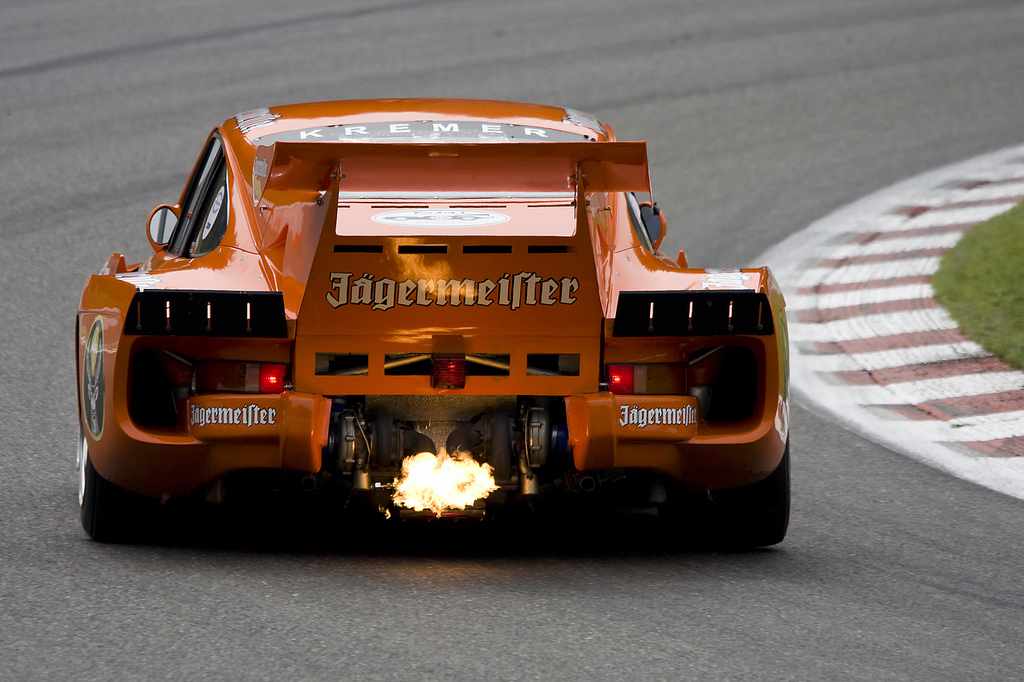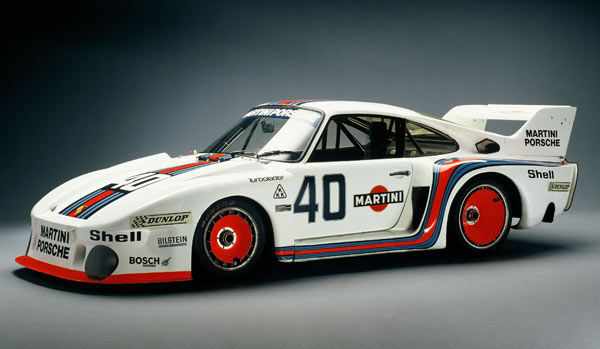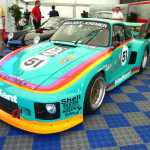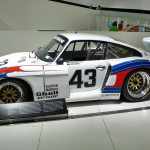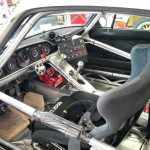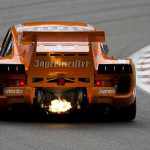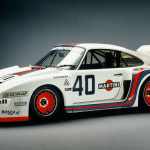Before there was the nutty-as-a-fruitcake FIA Group B racing, there was the only-slightly-daft FIA Group 5. Group 5 is the series that saw the 1500 hp Porsche 917 in 1970 and ‘71 and the Porsche 935 later in the decade. The Group 5 formula changed significantly over the decade, as demonstrated by the two vastly different examples of racers that Porsche entered into competition. Whereas the 917 was a pure prototype with only 25 built (under the watchful eye of one Ferdinand Piëch), the rules were later changed to force manufacturers into entering “special production cars” that had to be based on normal production models, which is why the 935 was based on the 911 Turbo. In Group 5, the 935 competed with the likes of the Ferrari 512BB LM, the BMW 3.0CSL, and the BMW M1. Despite the stiff competition, the 935 won a full 33% of the races it entered, including the outright win at the 1979 24 Hours of Le Mans, 6 wins at the 24 Hours of Daytona, 3 wins at the 1000km Nürburgring, and 6 wins at the 12 Hours of Sebring.
Depending on the year, the race, and the resulting engine under the hood in the trunk, the 935 had a top speed of some 360 kph and as much as 900 hp at its disposal from a flat-six turbo engine. The Porsche 935 was as successful an endurance racer as you could imagine.
It was the 935 racer, lacking the characteristic 911 headlights due to a loophole in the FIA rulebook, that provided inspiration for the famous Porsche 911 type 930 Flachbau, or Slant Nose, that Porschephiles go weak in the knees for. Personally, I find that the Flachbau lacks the appeal that early 911s have, probably because it looks nothing like the overgrown VW Beetle should look like. The slant nose was something of a perversion to the original 911 concept, even if it made for a superior racer. Maybe I’m just old-fashioned. The 935 also featured the first Porsche turbo engine with an intercooler, something that is seen on every turbocharged production vehicle today.
The design of the 935 is credited to Norbert Singer, a product of the University of Munich’s engineering program. Singer played a role in every one of Porsche’s 16 overall victories at the 24 Hours of Le Mans, an achievement no other can claim. This monumental accomplishment is chronicled in Singer’s 2006 book entitled “24:16”, in reference to the number of hours and victories at Le Mans. I think I’ll be ordering a copy of that for myself.
For those of you easily confused by Porsche’s perplexing numeric nomenclature, the 935 should not be confused with the 936. Whereas the 935 was based on the 911 Turbo, the 936 was based on the iconic 917 (like the one Steve McQueen drove in the movie Le Mans). In terms of road cars, inspiration from the 935 can be seen in the biblically-fast 959. The 959 took advantage of the race-bred technology and motorsport experience that Porsche garnered with the 935. But the 959 is a story all its own, and it’s a story for another time.
Enjoy these videos and we’ll see you next time on From The Porsche Archives.
It had just “enough” power for Paul Newman. That man was a legend.
[Photo credits: Flikr]
[Video credits: YouTube]

